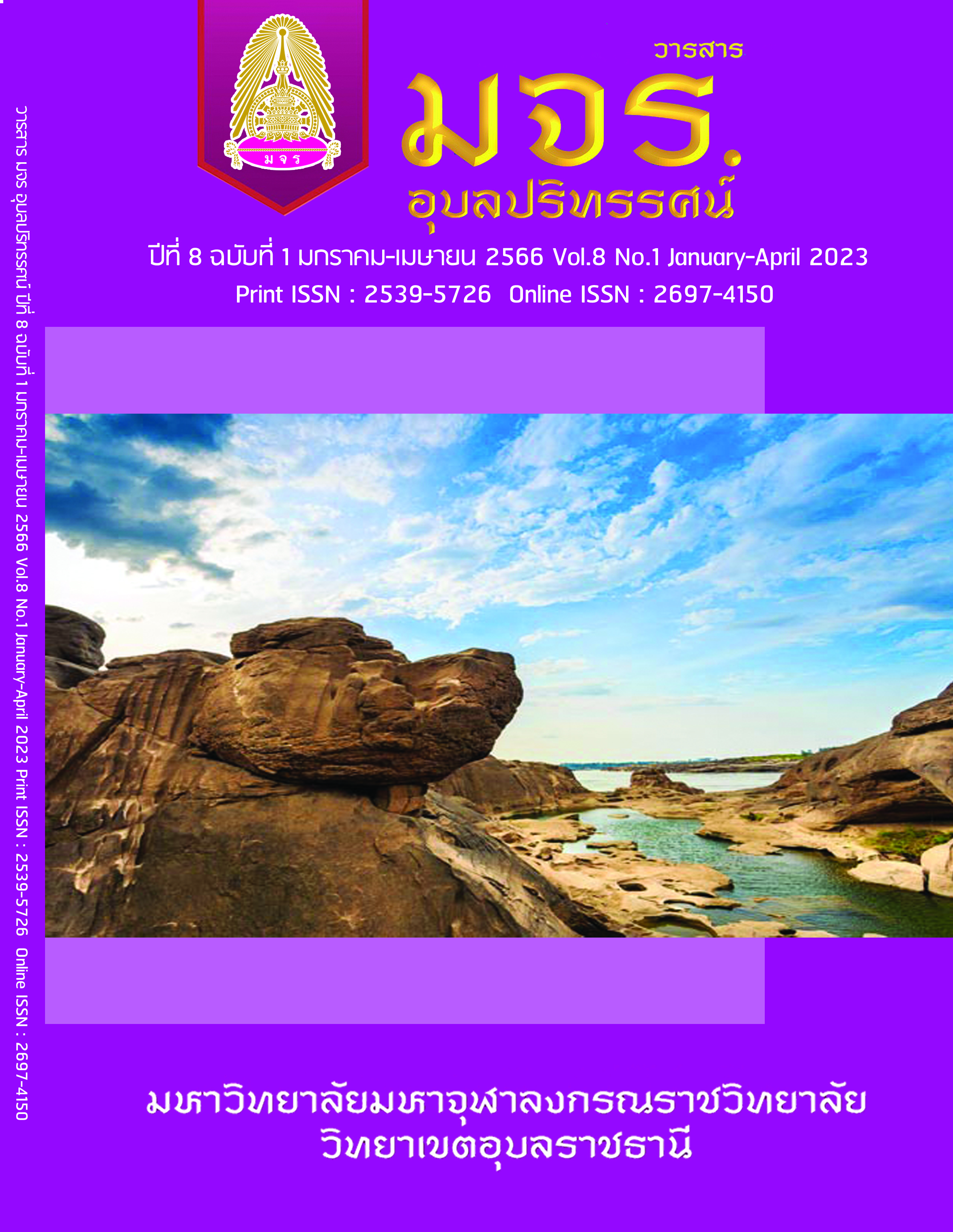Guidelines for the Development of Creative Leadership of the School Administrators under Surin Primary Educational Service Area Office 2
Main Article Content
Abstract
The objectives of this study were 1) to study the current state of creative leadership of school administrators under the Surin Primary Educational Service Area Office 2, 2) to compare the creative leadership of school administrators under the Surin Primary Educational Service Area Office 2 classified by age, experience, educational level and the size of the educational establishments are different or not, and 3) to prepare guidelines for developing creative leadership of school administrators under the Surin Primary Educational Service Area Office 2 multistage sampling. The research instrument was a questionnaire. The statistics used in the research were frequency distribution, percentile, mean, t-test for independent, and the F-test statistic by One-Way ANOVA analysis. The results were found that: 1.The current state of creative leadership of educational institution administrators under the Surin Primary Educational Service Area Office 2, when considering each aspect, it was found that they were at the highest level in 4 aspects, 1 aspect at high level. The averages were sorted from highest to lowest as follows: trust team work flexibility and adaptability Imagination vision. 2. Comparison of creative leadership of school administrators under the Surin Primary Educational Service Area Office 2, classified by age, experience, educational level and the overall size of the educational establishments are different. 3.Guidelines for developing creative leadership of school administrators under the Surin Primary Educational Service Area Office 2:
3.1 Vision The administrators encourage teachers to jointly set the vision to go further can predict what will happen in the future in order to develop in the same direction develop the ability to communicate the vision to subordinates and stakeholders to realize and appreciate the shared vision and promote the evaluation of the implementation of the vision for improvement and correction 3.2 Flexibility and adaptability Management develops and improves changes, revises rules and regulations. How to work in accordance with the context of the organization provide opportunities for teachers to demonstrate their ability to work have thinking skills. Adapt to a systematic approach to problem solving develop the ability to integrate work in various dimensions as appropriate. 3.3 Imagination The administrators promote teacher behavior in expressing a clear visualization process with clear guidelines creatively look at solutions to problems develop administrators and teachers to demonstrate the ability to think, prudently and prudently in their work, and seek new methods. New approaches are suitable for ever-changing situations 3.4 Teamwork Executives support to advise teachers and personnel to play a role as coordinator of analysis synthesize opinions in the team to provide expertise in the operation encourage personnel to express their opinions listen and work together to solve problems in working properly. Executives create a systematic determination of the roles and functions of the personnel to achieve their directions and aims. 3.5 Trust Executives are open and willing to listen to opinions and agree to follow the proposals of their subordinates. Build confidence in the members of the organization by acting as a good role model and adhering to good governance. Respect personnel's decisions. Respect understands the mistakes of personnel..
Article Details
References
กรองทิพย์ นาควิเชตร. (2552). ภาวะผู้นําเชิงสร้างสรรค์เพื่อการศึกษา. สมุทรปราการ : ธีรสาส์น.ฉลาด กันกา. (2550).
กิตติ์กาญจน์ ปฏิพันธ์. (2555). โมเดลสมการโครงสร้างภาวะผู้นำเชิงสร้างสรรค์
ของผู้บริหารสถานศึกษาอาชีวศึกษา.วิทยานิพนธ์ ปร.ด.ขอนแก่น : มหาวิทยาลัยขอนแก่น
ดวงแข ขำนอก. (2559). การศึกษาภาวะผู้นำเชิงสร้างสรรค์ของผู้บริหาร
สถานศึกษา สังกัดสำนักงานเขตพื้นที่การศึกษานครราชสีมา เขต 6. วิทยานิพนธ์ ค.ม. (การบริหารการศึกษา). นครราชสีมา : บัณฑิตวิทยาลัย มหาวิทยาลัยราชภัฏ นครราชสีมา.
Adair, J. (2007). Leadership for Innovation: How to organize team creativity and harvest ideas. London: Kogan Page.
Bass. (1985). Leadership and performance beyond expectaions. New York: Random. .
Bennis, W. (2002). “Creative Leadership.” [ABI]. Bangkok: Chulalongkorn University.
Brown, T. (2009. “Change by design: How design thinking transforms organization and inspires innovation.” New York: Harper Collins.

